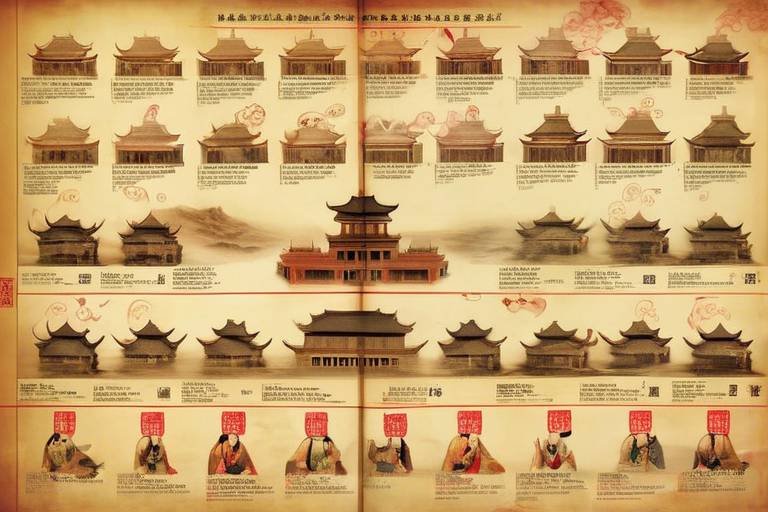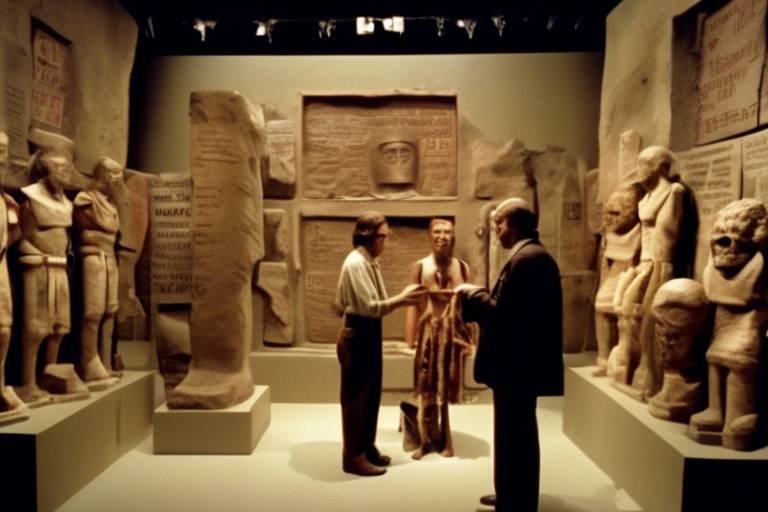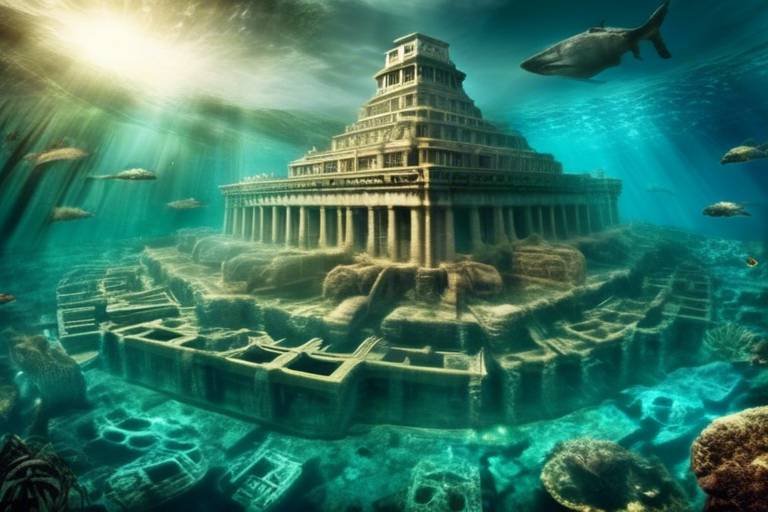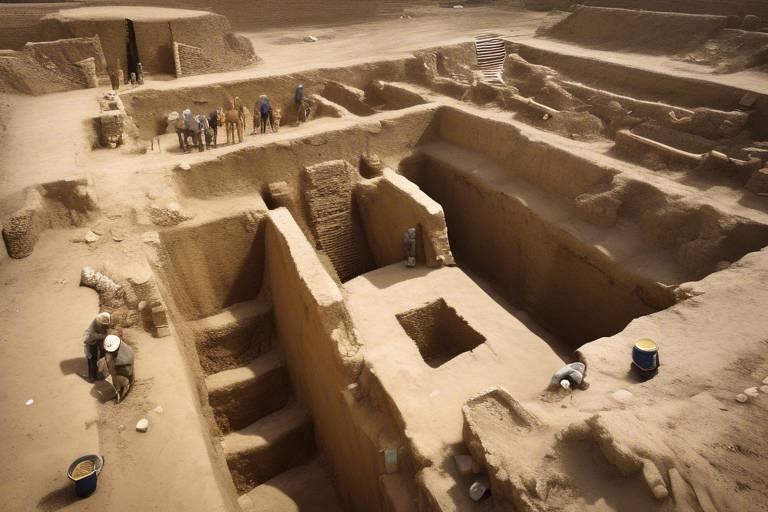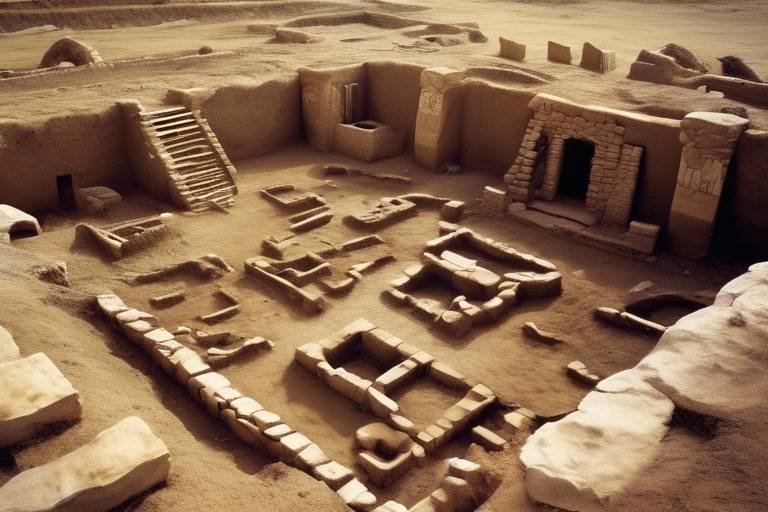Ancient Chinese Dynasties - A Timeline of Power
Delve into the rich tapestry of ancient Chinese history, where dynasties rose and fell, shaping the very essence of a civilization that stood the test of time. From the mighty Shang Dynasty with its intricate bronze technology to the elegant Tang Dynasty flourishing with cultural achievements, each era brought forth a unique blend of power, innovation, and influence.
As we journey through the annals of time, we encounter the enigmatic Zhou Dynasty, steeped in the concept of the Mandate of Heaven, guiding the destiny of rulers and laying the groundwork for philosophical ideologies that would resonate for centuries. The short but impactful reign of the Qin Dynasty, under the iron-fisted Emperor Qin Shi Huang, left an indelible mark on China's landscape, uniting the land under a single banner and erecting the iconic Great Wall.
The Han Dynasty emerges as a beacon of progress, ushering in an era of scientific advancements, artistic brilliance, and administrative reforms that solidified China's position as a regional powerhouse. The opulent Tang Dynasty shines brightly on the horizon, a golden age where poetry and painting flourished, and the bustling capital of Chang'an buzzed with trade and intellectual exchange.
Transitioning to the Song Dynasty, we witness a period of innovation and prosperity, where movable type printing revolutionized communication, Neo-Confucianism shaped thought, and the arts bloomed in a symphony of creativity. The Yuan Dynasty, a chapter of foreign rule under the Mongol Empire, brought new cultural influences and administrative structures to China, altering the landscape of governance and society.
The Ming Dynasty rises like a phoenix, with Admiral Zheng He's legendary voyages, the grandeur of the Forbidden City, and a renaissance of Chinese arts and culture that defined an era of stability and artistic brilliance. Each dynasty, a chapter in the grand narrative of Chinese history, contributed its unique essence to the tapestry of power and influence that continues to captivate and inspire.

Shang Dynasty (c. 1600-1046 BCE)
The Shang Dynasty, known for its advanced bronze technology and oracle bone inscriptions, ruled ancient China from around 1600 to 1046 BCE, setting the stage for future dynasties. This period marked a significant advancement in Chinese civilization, with the Shang people excelling in craftsmanship and artistry. The use of bronze in weaponry and ritual objects showcased their skill and craftsmanship, reflecting a society that valued both warfare and ceremonial practices.
Moreover, the Shang Dynasty is renowned for its oracle bone inscriptions, which provide valuable insights into ancient Chinese beliefs, rituals, and governance. These inscriptions, carved on turtle shells and animal bones, were used for divination purposes, offering a unique glimpse into the spiritual practices of the time. The complexity and sophistication of the oracle bone script highlight the intellectual and cultural achievements of the Shang Dynasty.
Despite its eventual decline and overthrow by the Zhou Dynasty, the legacy of the Shang Dynasty endured through its cultural contributions and technological innovations. The intricate bronze artifacts and oracle bone inscriptions unearthed by archaeologists continue to fascinate historians and enthusiasts alike, shedding light on a pivotal period in Chinese history.

Zhou Dynasty (1046-256 BCE)
The Zhou Dynasty, spanning from 1046 to 256 BCE, holds a significant place in ancient Chinese history. This era was characterized by the concept of the Mandate of Heaven, a belief that the ruling dynasty had the divine approval to govern. The Zhou Dynasty witnessed the division into Western and Eastern Zhou periods, with the latter marked by political turmoil and the gradual decline of centralized power.
During the Zhou Dynasty, Chinese territory expanded significantly, incorporating various regions and cultures under its rule. This period also saw the emergence of key philosophical ideas that would shape Chinese society for centuries to come. Confucianism, emphasizing moral values and social harmony, and Daoism, focusing on natural balance and individual cultivation, gained prominence during the Zhou Dynasty.
One of the most remarkable aspects of the Zhou Dynasty was its emphasis on hierarchical social structure and the importance of rituals and ceremonies. The ruling elite, including the king and nobility, played a crucial role in maintaining order and stability within the vast empire. The Zhou Dynasty's influence extended beyond political governance to include cultural and intellectual developments that laid the foundation for future dynasties.
Despite its achievements, the Zhou Dynasty faced internal strife and external threats towards its later years, leading to a period of fragmentation and regional conflicts. The decline of central authority during the Eastern Zhou period paved the way for the subsequent dynasties to rise to power and shape the course of Chinese history.
In conclusion, the Zhou Dynasty's legacy resonates through the annals of ancient China, leaving a lasting impact on governance, philosophy, and cultural traditions. By navigating through periods of prosperity and challenges, the Zhou Dynasty set the stage for the evolution of Chinese civilization and the rich tapestry of dynastic rule that followed.

Qin Dynasty (221-206 BCE)
The Qin Dynasty, spanning from 221 to 206 BCE, holds a significant place in Chinese history due to its short but impactful rule under Emperor Qin Shi Huang. This period marked a pivotal moment in ancient China, characterized by a series of monumental achievements that left a lasting legacy on the nation.
Emperor Qin Shi Huang, known for his ambitious and authoritarian rule, successfully unified the warring states of China, establishing the first centralized imperial government. One of the most remarkable feats of the Qin Dynasty was the standardization of writing, measurements, and currency, which contributed to administrative efficiency and cultural cohesion across the empire.
Perhaps the most iconic symbol of the Qin Dynasty's power and ingenuity is the construction of the Great Wall of China. This massive fortification project aimed to protect the northern borders of the empire from invasions, showcasing the engineering prowess and strategic vision of the Qin rulers.
Furthermore, the Qin Dynasty implemented a series of legal and administrative reforms, laying the foundation for future governance systems in China. The centralization of power, though effective in unifying the empire, also sparked resistance and dissent among the population, leading to social unrest and eventual downfall.
Despite its relatively short duration, the Qin Dynasty's influence on Chinese history cannot be overstated. The legacy of Emperor Qin Shi Huang and his dynasty continues to resonate in modern China, shaping the country's identity and cultural heritage to this day.

Han Dynasty (206 BCE-220 CE)
The Han Dynasty, spanning from 206 BCE to 220 CE, was a pivotal period in ancient Chinese history marked by remarkable advancements in various fields. This era witnessed significant progress in science, arts, and governance, shaping the foundation of Chinese civilization for centuries to come.
One of the key achievements of the Han Dynasty was the expansion of the Silk Road trade route, facilitating cultural exchange and economic development between China and the Western regions. This network of trade routes not only boosted commerce but also fostered the exchange of ideas, technologies, and goods across vast distances.
Moreover, the Han Dynasty implemented the civil service system, a merit-based method of selecting government officials based on their abilities and knowledge rather than noble birth. This system helped in promoting talent and expertise within the administration, leading to more efficient governance and societal progress.
During this period, the Han Empire experienced a period of prosperity and stability, with advancements in agriculture, metallurgy, and engineering. Innovations such as the invention of paper, water-powered mills, and the use of iron in tools and weapons revolutionized daily life and contributed to the empire's growth and success.
The Han Dynasty also saw the rise of powerful emperors such as Emperor Wu, who expanded the empire's borders, centralized government control, and promoted cultural and intellectual pursuits. The era witnessed the flourishing of literature, arts, and philosophy, with notable figures like Sima Qian, Ban Zhao, and Zhang Heng making significant contributions to Chinese culture.
In conclusion, the Han Dynasty stands out as a golden age of Chinese civilization, characterized by innovation, cultural achievements, and political stability. Its legacy continues to influence modern China and serves as a testament to the enduring impact of ancient dynasties on shaping the course of history.

Tang Dynasty (618-907 CE)
The Tang Dynasty, spanning from 618 to 907 CE, is often regarded as a golden age in Chinese history. This prosperous era was characterized by remarkable cultural achievements that left a lasting impact on Chinese civilization. The Tang Dynasty's capital, Chang'an, flourished as a cosmopolitan center of trade and intellectual exchange, attracting scholars, artists, and traders from across the known world. The period saw a flourishing of arts, particularly in poetry and painting, with renowned poets like Li Bai and Du Fu contributing to the rich cultural tapestry of the time.
One of the most notable aspects of the Tang Dynasty was its openness to foreign influences, which enriched the cultural landscape of China. The dynasty's vibrant trade connections along the Silk Road facilitated the exchange of goods, ideas, and technologies with distant lands, fostering a spirit of cosmopolitanism and innovation. This cultural exchange not only enriched Chinese society but also influenced the development of art, literature, and technology in profound ways.
The Tang Dynasty also made significant advancements in governance and administration, implementing a system of merit-based civil service examinations that allowed individuals to rise to positions of power based on their abilities rather than their social status. This emphasis on talent and meritocracy contributed to the stability and prosperity of the empire, fostering a sense of social mobility and opportunity for its citizens.
Moreover, the Tang Dynasty's patronage of the arts and scholarship led to the flourishing of intellectual pursuits and the development of new philosophical ideas. This period witnessed the blending of diverse cultural traditions, resulting in the synthesis of Confucianism, Daoism, and Buddhism into a rich tapestry of beliefs and practices that shaped Chinese society for centuries to come.

Song Dynasty (960-1279 CE)
The Song Dynasty, spanning from 960 to 1279 CE, was a remarkable period in Chinese history characterized by economic prosperity and significant advancements in technology and culture. During this time, China experienced a flourishing of arts, literature, and innovation, solidifying its position as a center of civilization in East Asia.
One of the most notable achievements of the Song Dynasty was the invention of movable type printing, credited to the artisan Bi Sheng. This revolutionary technology allowed for the mass production of books and documents, leading to a significant increase in literacy rates and the dissemination of knowledge across the empire.
Furthermore, the Song Dynasty witnessed the rise of Neo-Confucianism, a philosophical and ethical system that combined elements of Confucianism, Taoism, and Buddhism. This new intellectual movement emphasized the importance of moral cultivation and self-improvement, shaping the ethical framework of Chinese society for centuries to come.
Art and literature also thrived during the Song Dynasty, with painters like Fan Kuan and poets like Su Shi leaving a lasting impact on Chinese artistic expression. Landscape painting, in particular, reached new heights of sophistication and symbolism, capturing the beauty of nature and the human experience.
Economically, the Song Dynasty was a period of growth and innovation, with advancements in agriculture, commerce, and urban development. The Grand Canal, a massive waterway system connecting the Yellow River and Yangtze River, facilitated trade and transportation, stimulating economic activity and cultural exchange.
In conclusion, the Song Dynasty stands out as a golden age of Chinese civilization, marked by creativity, intellectual curiosity, and prosperity. Its legacy continues to influence modern China, reflecting a time of innovation and cultural richness that shaped the course of history.

Yuan Dynasty (1271-1368 CE)
The Yuan Dynasty, spanning from 1271 to 1368 CE, was a significant period in Chinese history characterized by foreign rule for the first time. Established by Kublai Khan of the Mongol Empire, the Yuan Dynasty brought about new cultural influences and administrative systems to China, reshaping the region's social and political landscape.
During the Yuan Dynasty, the Mongols implemented policies that aimed to consolidate their power, such as the use of a census system and the establishment of a nationwide postal service. This centralized governance structure allowed for greater control over the vast territories under Yuan rule and facilitated communication and trade across the empire.
One of the enduring legacies of the Yuan Dynasty was the promotion of cultural exchange between China and the Mongol Empire. This period witnessed the blending of diverse traditions, languages, and artistic styles, leading to a rich tapestry of cultural expression that reflected the dynamic interactions between different ethnic groups.
Despite the foreign rule of the Mongols, the Yuan Dynasty also saw the flourishing of trade and commerce, facilitated by the extensive network of roads and waterways established during this period. The Silk Road, connecting China to Central Asia and beyond, played a crucial role in facilitating the exchange of goods, ideas, and technologies, contributing to the economic prosperity of the empire.
Moreover, the Yuan Dynasty fostered innovation in various fields, including agriculture, astronomy, and medicine. The introduction of new crops and farming techniques improved agricultural productivity, while advances in astronomy and medicine led to a better understanding of the natural world and the human body.
Despite its eventual decline and the rise of internal conflicts, the Yuan Dynasty left a lasting impact on Chinese history, paving the way for future developments and shaping the cultural identity of the region for centuries to come.

Ming Dynasty (1368-1644 CE)
The Ming Dynasty, spanning from 1368 to 1644 CE, was a pivotal period in Chinese history characterized by remarkable achievements and cultural advancements. Under the Ming rule, China experienced a flourishing of arts, architecture, and exploration, leaving a lasting legacy that shaped the country's identity.
One of the most notable aspects of the Ming Dynasty was the series of maritime expeditions led by the renowned Admiral Zheng He. These expeditions, known as the Treasure Voyages, showcased China's naval prowess and established diplomatic relations with distant lands, enhancing the country's influence on the global stage.
During the Ming Dynasty, the iconic Forbidden City was constructed in Beijing, serving as the imperial palace and a symbol of the emperor's power. This architectural marvel exemplified the grandeur and sophistication of Ming craftsmanship, reflecting the dynasty's emphasis on artistic expression and cultural refinement.
Art and literature flourished during the Ming Dynasty, with notable advancements in painting, porcelain production, and literature. Ming artists created exquisite works of art, such as delicate blue-and-white porcelain and intricate landscape paintings, showcasing the dynasty's aesthetic achievements and creative spirit.
Moreover, the Ming Dynasty witnessed a revival of traditional Chinese culture and values, fostering a sense of national identity and pride. Confucian principles of morality, filial piety, and social harmony were promoted, shaping the ethical framework of Chinese society and influencing governance policies.
Despite its cultural achievements, the Ming Dynasty also faced internal challenges, including political unrest and economic instability. Towards the end of the dynasty, rebellions and invasions weakened the imperial authority, leading to the eventual downfall of the Ming rulers and the rise of the Qing Dynasty in 1644.
In conclusion, the Ming Dynasty stands as a testament to China's rich cultural heritage and innovative spirit, embodying a golden age of artistic excellence and exploration. Its legacy continues to inspire admiration and fascination, reflecting a period of profound transformation and creativity in ancient Chinese history.
Frequently Asked Questions
- What were the major achievements of the Tang Dynasty?
The Tang Dynasty was known for its cultural flourishing, particularly in poetry and painting. The capital, Chang'an, was a vibrant center of trade and intellectual exchange. Additionally, the Tang Dynasty expanded territory, reformed the government, and promoted Buddhism.
- How did the Han Dynasty contribute to Chinese history?
The Han Dynasty made significant advancements in various fields such as science, arts, and governance. They expanded the Silk Road trade route, established the civil service system, and laid the foundation for a powerful empire that influenced Chinese history for centuries.
- What impact did the Ming Dynasty have on Chinese society?
The Ming Dynasty is renowned for its maritime expeditions, construction of the Forbidden City, and revival of Chinese arts and culture. These achievements brought stability, cultural richness, and artistic innovation to Chinese society, leaving a lasting legacy.

